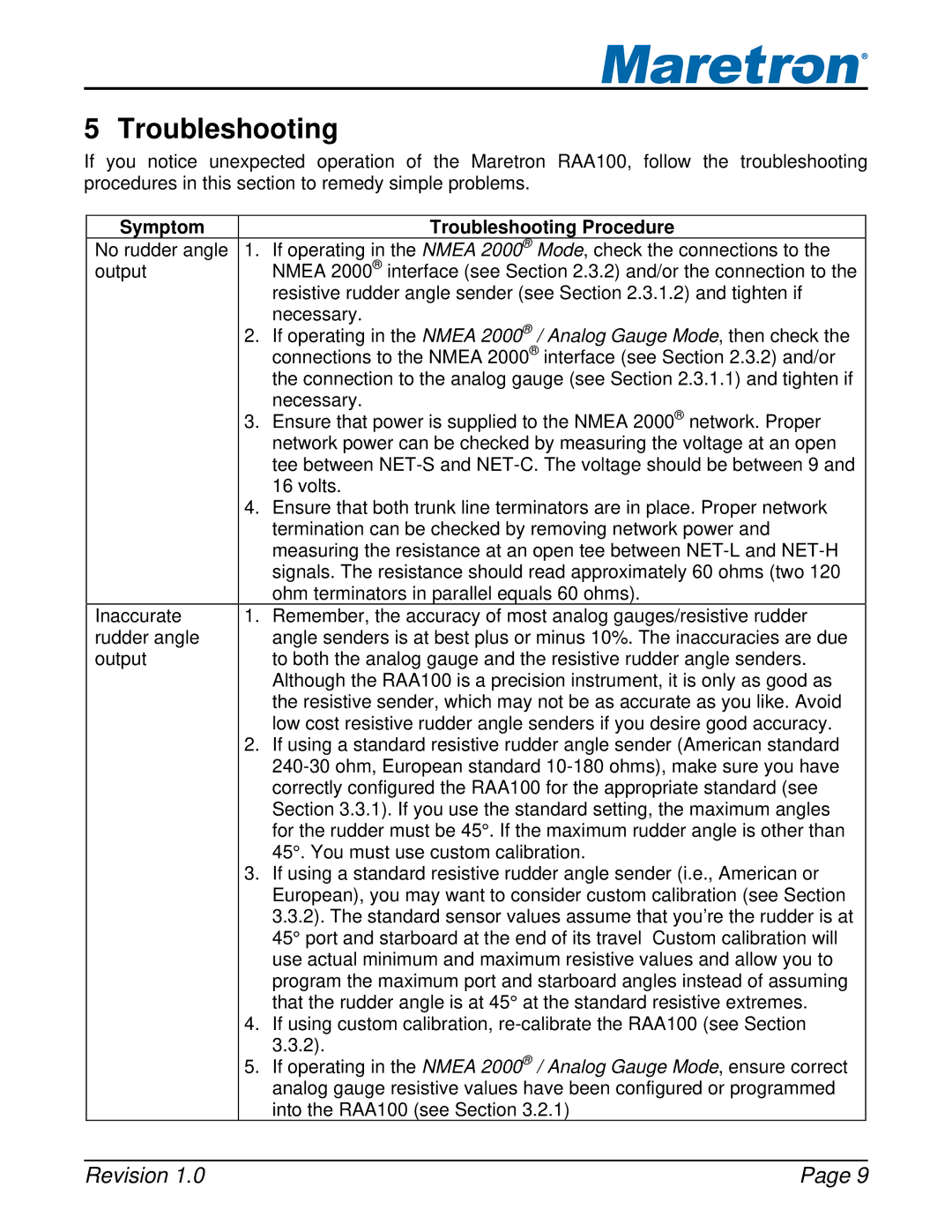
®
5 Troubleshooting
If you notice unexpected operation of the Maretron RAA100, follow the troubleshooting procedures in this section to remedy simple problems.
Symptom
No rudder angle output
Inaccurate rudder angle output
Troubleshooting Procedure
1.If operating in the NMEA 2000® Mode, check the connections to the NMEA 2000® interface (see Section 2.3.2) and/or the connection to the resistive rudder angle sender (see Section 2.3.1.2) and tighten if necessary.
2.If operating in the NMEA 2000® / Analog Gauge Mode, then check the connections to the NMEA 2000® interface (see Section 2.3.2) and/or the connection to the analog gauge (see Section 2.3.1.1) and tighten if necessary.
3.Ensure that power is supplied to the NMEA 2000® network. Proper network power can be checked by measuring the voltage at an open tee between
4.Ensure that both trunk line terminators are in place. Proper network termination can be checked by removing network power and measuring the resistance at an open tee between
1.Remember, the accuracy of most analog gauges/resistive rudder angle senders is at best plus or minus 10%. The inaccuracies are due to both the analog gauge and the resistive rudder angle senders. Although the RAA100 is a precision instrument, it is only as good as the resistive sender, which may not be as accurate as you like. Avoid low cost resistive rudder angle senders if you desire good accuracy.
2.If using a standard resistive rudder angle sender (American standard
3.If using a standard resistive rudder angle sender (i.e., American or European), you may want to consider custom calibration (see Section 3.3.2). The standard sensor values assume that you’re the rudder is at 45° port and starboard at the end of its travel Custom calibration will use actual minimum and maximum resistive values and allow you to program the maximum port and starboard angles instead of assuming that the rudder angle is at 45° at the standard resistive extremes.
4.If using custom calibration,
5.If operating in the NMEA 2000® / Analog Gauge Mode, ensure correct analog gauge resistive values have been configured or programmed into the RAA100 (see Section 3.2.1)
Revision 1.0 | Page 9 |
